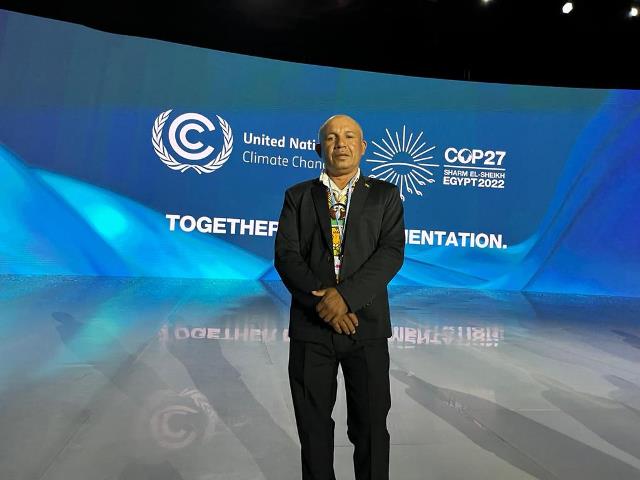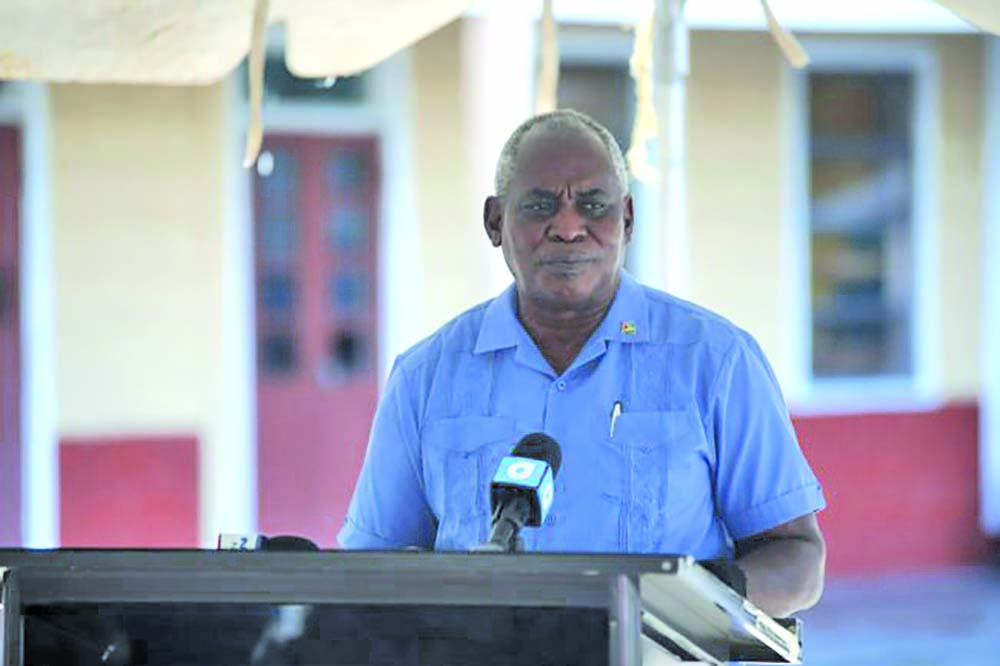By Ronald Taylor
“We all realise that the role the indigenous people play in protecting our forest, so there is more sensitisation need to be done so that we can continue these work that we are part of in a more sustainable way”
Those were the words of Toshao of Moraikobai village Mr. Derrick John, Chair of the National Toshaos Council (NTC), who recently took part in a panel discussion at the Nature Zone of COP 27 UN Climate Change Conference.
Toshao John took the time to raise awareness on how the Indigenous community was able to engage the Government of Guyana in efforts to implement the Low Carbon Development Strategy (LCDS) 2030.
“The NTC is working very closely with the Government and so far we have seen the willingness to support indigenous people. One of the good things is that they are listening to us. So, we are having this very good mature conversation whereby they are listening to the indigenous people… Recently we had a conference; the President committed three billion dollars more for the indigenous people and I know of funding being made through the LCDS 2030, more funding will be made available”
The LCDS 2030 continues along the path of promoting sustainable development since its introduction in 2009, through the protection of its forest and ecosystem, aligned with global climate goals.

The indigenous people are known as Guyana’s ‘First People’ but their communities have seen the least development and economic growth coupled with other environmental risks compared to its counterparts of the coast lands. Toshao John believes that once the indigenous community continues to sound their voice, the message will be clear that more support is needed in their villages.
“Basically what we are pushing for is funding for our indigenous people, so that we can be able to adapt and mitigate the effect of climate change, because we all know that the world is suffering presently and more so how it’s affecting local people. So, obviously there needs to be more funding made available so that indigenous people can be able to set up projects that they can cope with all these things that are happening.”
Signaling its efforts to continue the preservation of its forest, Guyana was among five countries who recently signed a Forestry Partnership with the European Union during the COP27. The partnership aims to enhance the contributions of the forest in protection of biodiversity and sustainable activities. In Guyana’s case this new partnership aligns with the advancement of the LCDS 2030 and the fight against climate change.
The Indigenous communities of Guyana occupy an extensive amount of Guyana’s forest that spans over 85% of the country’s territorial space.
Under Toshao John’s stewardship, the NTC in August passed a resolution in support of the LCDS 2030 and its proposals for sharing the benefits of potential revenues from the sale of carbon credits in the voluntary carbon markets. A dedicated 15% of funds garnered from the revenues of the LCDS 2030 will go towards the development of village led projects and the support of Indigenous communities across Guyana.

Toshao John said that with additional support more projects will be able to be implemented in the communities to benefit the people.
“Most of the indigenous communities, we are hearing that they’re saying that they want to introduce smart agriculture. That’s one of the things that the NTC’s perspective we are working with partners also to introduce… We all realise that the role the indigenous people play in protecting our forest, so there is more sensitisation needs to be done so that we can continue these work that we are part of in a more sustainable way. Tourism is also a big thing on our agenda, also setting up processing facilities for indigenous communities so that we can be able to process raw materials, forest products and agro-processing.”
He added, “Also another important thing that we need is a continuation of demarcation and land titling of indigenous communities and that’s also a work in progress our resources are very critical and we need that ownership with the support from the government.”
Toshao John, coming from a 20 member executive committee, represents more than 200 elected Toshaos from villages and thousands of Indigenous people across Guyana. There must be a balance to keeping traditions alive along with the development and protection of the environment John said.
“We can still maintain our tradition even though that we want modernization, one of the things like having access to internet communication which has never really happened in the past, that’s part of modernization, introducing of I.T. in communities, but also that should not hinder us from maintaining our identity. Our way of life is very critical, that’s who we are, and that’s something that we are trying not to move away from.”
This story was published with the support of Climate Tracker’s Caribbean Climate Justice Journalism Fellowship.













